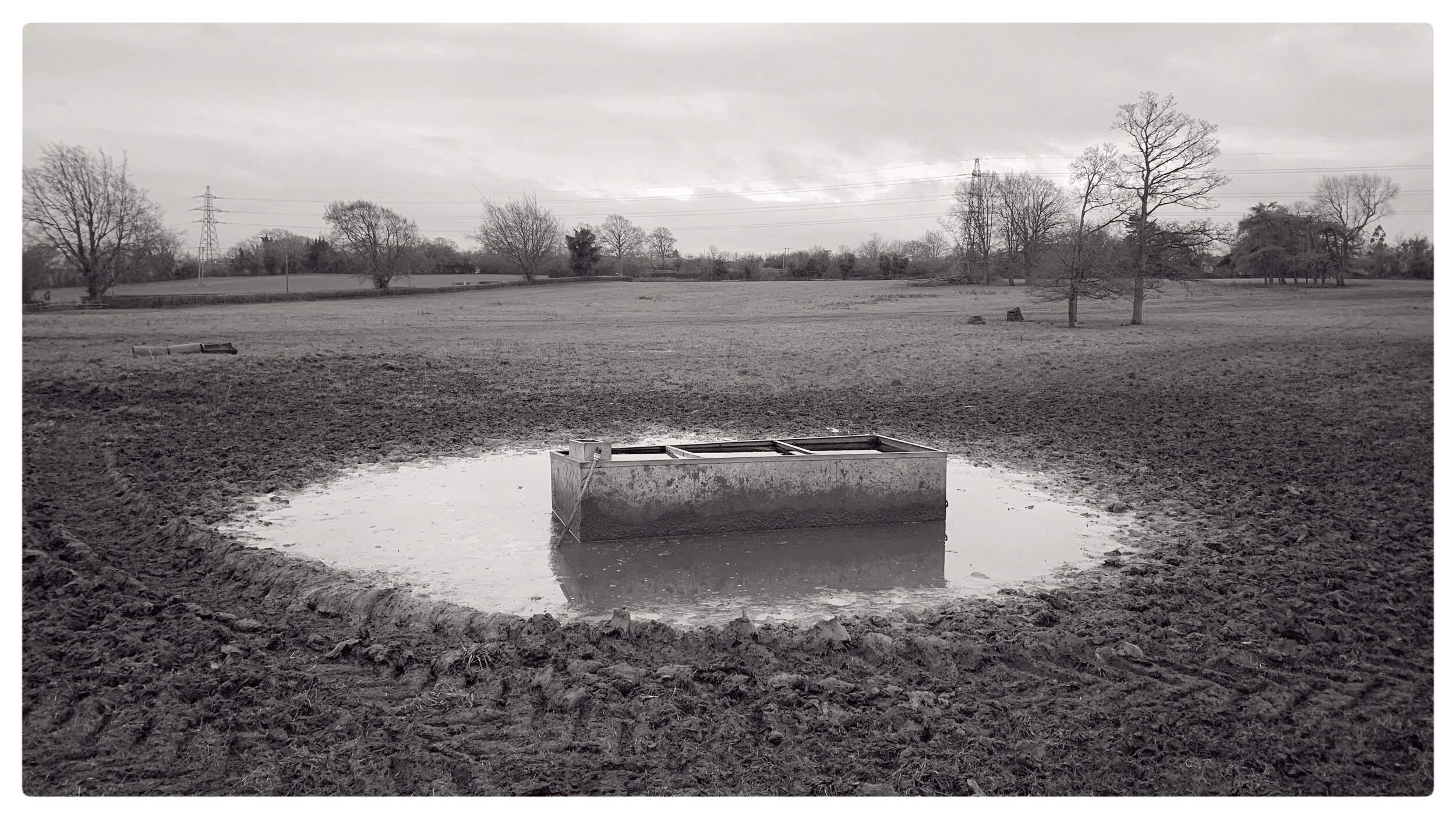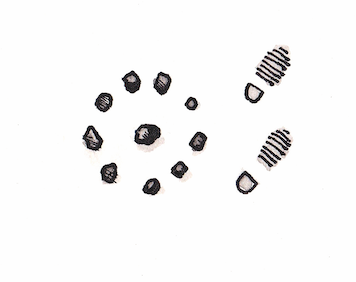At the start of our third national lockdown back in January, we launched a photographic series on Instagram, themed On Familiar Ground, inviting friends of Ernest to share their images taken on local walks during the course of the year, seeking the curious in the everyday, and the new in the familiar. We were blessed with an incredible array of contributors, from travel photographers and nature writers to outdoor counsellors and artists, all limited to roaming close to home and seeing their local landscapes with fresh eyes. We’ve compiled some of our favourite images and stories from the series below…
Nash Point, Glamorgan Heritage Coast, by Daniel Alford
Photographer Rebecca Douglas is based in Thanet, Kent. She was born and raised by the sea, and for her, one of the silver linings of lockdown was to see visit nearby areas she’d never truly explored before the pandemic.
Pegwell Bay: “One sunset in December, I went for a walk at Pegwell Bay Nature Reserve, and so many of the elements aligned. The tide was high, the wind still, and the moon rose through the gradient of last light while marsh birds flocked together.”
Fantastic Mr Fox: “I opened the backdoor, looked down the garden and spotted a visitor sitting in the climber on my neighbour’s shed. It looked at me and I looked at it. I started clicking; the fox was looking straight down the barrel of my lens.”
Egret in the mist: “The weather vibes in Thanet are very muted here at the moment, with heavy cloud and fog clinging to the shore. It’s certainly reflecting the mood of current times.”
Travel photographer Dan Cook is based in Sheffield. Throughout the series of lockdowns he often walked the same route every day to see the landscape change through the seasons, or explored areas he’d only ever previously passed through by car.
Dandelion ruff: “I try to use my daily walks as a creative outlet; taking my camera to familiar places and experimenting. In this case, with some intentional camera movement, I tried to make something interesting from a lone dandelion.”
Woodland in the suburbs: “I picked one of the hottest days of the year for my longest walk during lockdown. The Sheffield Round Walk took me through familiar areas but also forced me to walk in places I only usually experience by car. I particularly enjoyed this small woodland squeezed between residential streets and a golf course.”
Signs of summer: “I’ve appreciated the changes that summer brings a little more mindfully this year. My daily walks through a nature reserve always reveal a subtle change in colour or texture, as different plants and trees thrive in the typical mix of sun and rain.”
Travel photographer Daniel Alford is based in Cardiff. During lockdown he found himself scouring Google Earth for local walks in the hope of scratching his adventure itch.
Dragons Back: “When lockdown measures were relaxed briefly in the summer, I headed into the mountains as often as I could. Eager to avoid the crowds, I explored the eastern Brecon Beacons for the first time.”
Lavernock Point: “This was about as far as my feet could take me during lockdown, a few miles along the coast from Cardiff Bay. Here you can see the red sands of the Triassic desert meeting the light limestone of the Jurassic seas.”
Fossil, Lavernock: “Hunting for clues of ancient worlds a short walk from Cardiff Bay. The rocks here took me back into the warm shallow seas of the Jurassic, where this ammonite once floated, minding its own business.”
Writer and Outdoors Counsellor Ruth Allen is based in the White Peak, Derbyshire. She made the decision early on in the pandemic to stay as close to home as possible, barely using her car. This has meant her covering the same ground over and over again, inviting her to pay a lot more attention to detail, and to look at her local area in new, creative ways.
Trees: “What a slow, gentle lift it is to see the same trees through a whole turning of the seasons.”
Bird hide: “Being in a landlocked place has driven me to despair at times during lockdown. I’ve hankered for water, desperate to see the sea. During the winter months I cycled to my local bird reserve to just sit and gaze at the stretch of water and wintering birds for a while. It helps to look into the distance.”
Peephole: “With a new way of looking at my local area, every hole in a fence opens up the possibility of seeing things you would otherwise overlook. In the case, gulls in the sewage works.”
Travel photographer Oliver Berry is based in Falmouth, Cornwall. Usually travelling to far-flung corners of the globe, he found himself having to adjust to this new reality of staying close to home during the pandemic, and spending a whole 12 months without ever leaving Cornwall.
Falmouth Docks: “The docks are 10 minutes’ walk away from my house. At night I can see the lights of the cranes and hear the drone of machinery. Over the last few months I’ve often walked there to look at the latest arrivals, and sometimes found myself tracking their journeys using GPS shipping trackers. It gives me a sense of connection to this old industry that’s kept the town going for nearly half a millennia.”
Stormy sea: “A lot of people say they love the sea. But down here in Cornwall, people have a much more ambivalent relationship with it. Shipwrecks, storms, beachings and drownings have been part of Cornwall’s history for hundreds of years, and for me and many other Cornish people, it’s impossible to forget how capricious and untrustworthy the sea can be.”
Writer Laura Pashby is based in the Cotswolds. During lockdown she would go out for a walk every day with her three sons and her camera in all weathers. She liked to capture foggy mornings (which happen often in her steep-hilled corner of the Cotswolds) and the sparkling winter light.
Hilltop bench: “I sat on a bench at the top of a hill, watching the valley filling up with fog. The hill on the opposite side of the valley floated like a tiny island in a sea of cloud.”
Umbellifers: “Foggy morning are my favourite, and those with a dusting of frost are the most magical of all. These umbellifers looked so pretty, draped with spiderwebs.”
Diverging path: “A favourite spot in the woods where a path diverges. The curve of the treetops made this scene feel otherworldly on a fog-softened morning.”





















